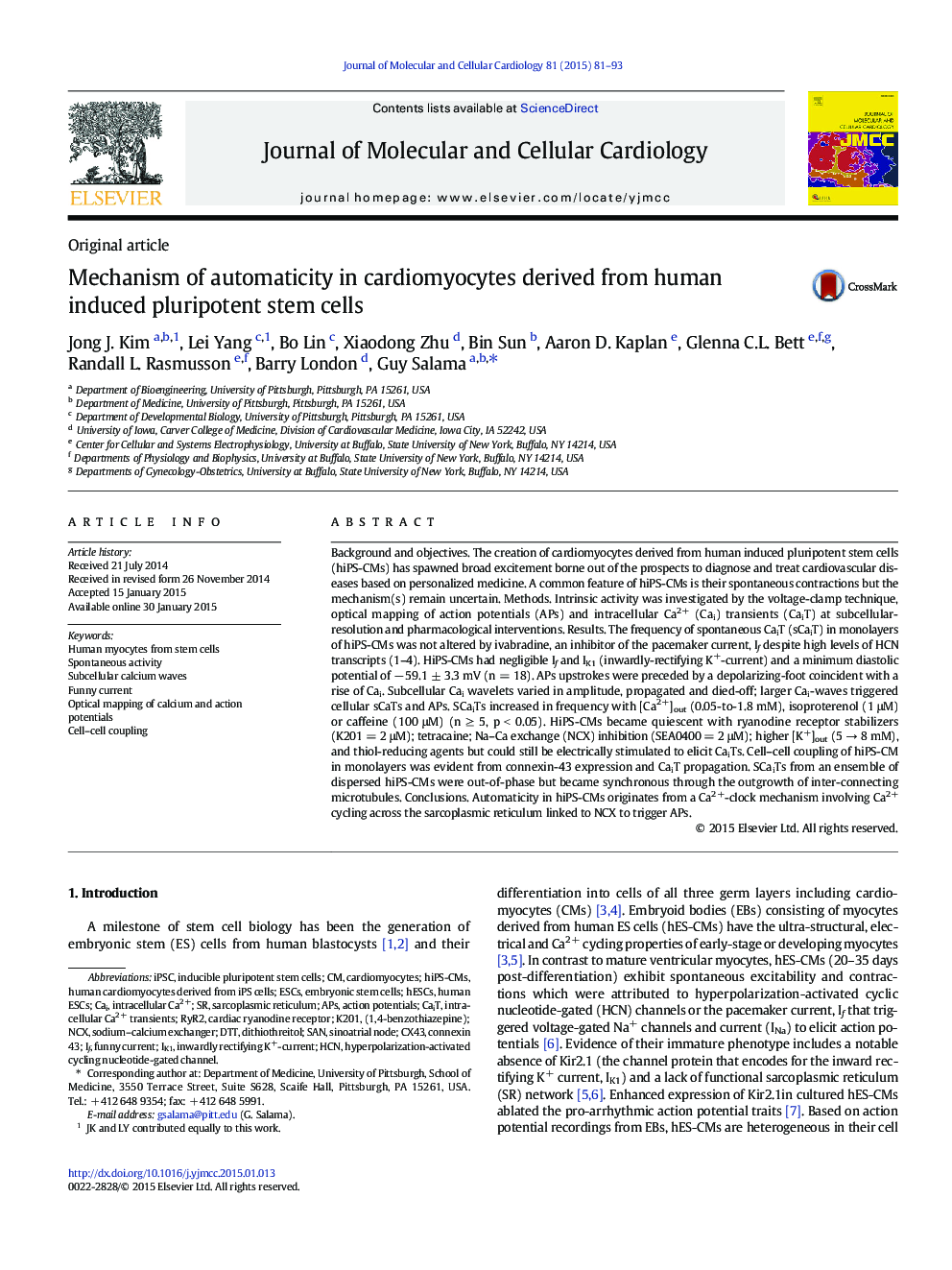| کد مقاله | کد نشریه | سال انتشار | مقاله انگلیسی | نسخه تمام متن |
|---|---|---|---|---|
| 2190501 | 1550424 | 2015 | 13 صفحه PDF | دانلود رایگان |
• HiPS-CMs hold great promise for personalized medicine to treat cardiac diseases.
• The mechanisms underlying their automaticity remain unknown.
• Ventricular hiPS-CMs express HCN message but no significant funny current, If.
• Subcellular Ca2 + & Vm maps show that aberrant Ca2 + release precedes depolarization.
• Stochastic subcellular Ca2 + waves control automaticity.
Background and objectives. The creation of cardiomyocytes derived from human induced pluripotent stem cells (hiPS-CMs) has spawned broad excitement borne out of the prospects to diagnose and treat cardiovascular diseases based on personalized medicine. A common feature of hiPS-CMs is their spontaneous contractions but the mechanism(s) remain uncertain. Methods. Intrinsic activity was investigated by the voltage-clamp technique, optical mapping of action potentials (APs) and intracellular Ca2+ (Cai) transients (CaiT) at subcellular-resolution and pharmacological interventions. Results. The frequency of spontaneous CaiT (sCaiT) in monolayers of hiPS-CMs was not altered by ivabradine, an inhibitor of the pacemaker current, If despite high levels of HCN transcripts (1–4). HiPS-CMs had negligible If and IK1 (inwardly-rectifying K+-current) and a minimum diastolic potential of − 59.1 ± 3.3 mV (n = 18). APs upstrokes were preceded by a depolarizing-foot coincident with a rise of Cai. Subcellular Cai wavelets varied in amplitude, propagated and died-off; larger Cai-waves triggered cellular sCaTs and APs. SCaiTs increased in frequency with [Ca2+]out (0.05-to-1.8 mM), isoproterenol (1 μM) or caffeine (100 μM) (n ≥ 5, p < 0.05). HiPS-CMs became quiescent with ryanodine receptor stabilizers (K201 = 2 μM); tetracaine; Na–Ca exchange (NCX) inhibition (SEA0400 = 2 μM); higher [K+]out (5 → 8 mM), and thiol-reducing agents but could still be electrically stimulated to elicit CaiTs. Cell–cell coupling of hiPS-CM in monolayers was evident from connexin-43 expression and CaiT propagation. SCaiTs from an ensemble of dispersed hiPS-CMs were out-of-phase but became synchronous through the outgrowth of inter-connecting microtubules. Conclusions. Automaticity in hiPS-CMs originates from a Ca2+-clock mechanism involving Ca2+ cycling across the sarcoplasmic reticulum linked to NCX to trigger APs.
Journal: Journal of Molecular and Cellular Cardiology - Volume 81, April 2015, Pages 81–93
